Women's Sports Medicine Program
175 Cambridge Street, 4th Floor
Boston, MA 02114
With ski season quickly approaching, it is time to start preparing your body. Getting onto the slopes without adequate conditioning can increase your risk of injury. A carefully designed exercise program can help decrease your risk for injury and improve your overall performance.
Most common ski injuries
The knee is the most commonly injured during skiing, accounting for roughly a third of all of all injuries incurred on the slopes. Half of those involve the anterior cruciate ligament (ACL) which provides rotational stability for the knee. Most of the time, these injuries occur when a skier “catches an edge,” loses control of one of their skies, or lands a jump awkwardly. When a skier tears the ACL, it is often accompanied by other soft tissue injuries, most commonly the meniscus and the medial collateral ligament. Injuring these structures often requires surgical intervention to stabilize the knee and a long course of rehabilitation to ultimately return the individual to the slopes.
However, there are modifiable risk factors for ACL injuries while skiing. Poor balance abilities, muscle weakness and muscular imbalances within the lower extremities can all lead to ACL injuries during skiing. Skiing truly is a balancing act, as it requires constant shifting from one extremity to the other in a highly dynamic environment. There are quick adjustments of your upper body, trunk and lower limbs to maintain your body weight over your skies and avoid falling.
Reducing risk of injury
Having adequate balance helps us perform turns, quick stops and adjust for obstacles such as moguls, ice and ungroomed snow. Working on this prior to the start of the season is achieved through both double leg and single leg exercises. By utilizing a variety of surfaces, we can mimic the same physical requirements of skiing. In addition, strengthening the quadriceps, hamstrings, core and hip muscles can improve our strength and neuromuscular control during skiing. Think of skiing as a constant squat for hours at a time. This endurance is unique to skiing and must be trained as such. Working on exercises such as sustained holds in squatting positions on both stable and unstable surfaces and utilizing a sports cord or a physical therapist to perturb the trunk and lower limbs during squats can be effective exercises to adequately prepare the body for the demands of skiing.
Finally, it is critical to understand the importance of the coupling of muscles that work together during skiing. In the “skier’s tuck position,” the anterior muscles of our lower body, mainly the quadriceps, hip and trunk flexors need to be twice as strong as the posterior muscles. However, we tend to neglect these backside muscles completely and rely on the front to do all of the work. Our spinal extensors, hamstrings and gluteal muscles are critically important to counteract the anterior forces of gravity as the skies point downhill. The gluteus medius, a muscle on the backside of our hip, is a critical stabilizer against rotational forces at our knee, and strengthening this can be hugely beneficial at preventing injury to the knee during skiing.
Examples of exercises that work this muscle include band walks, a side leg raise progression and single leg bridging. A ski-readiness program ideally should be initiated 2-3 months prior to the season in order to allow time for strength, neuromuscular education and balance to be achieved to its fullest. Working alongside a physical therapist or personal trainer can be helpful in preparing a program that addresses specific deficits and can be progressed as improvements are made.
Take home points:
- Start slow! Consider buying a half-day ticket to start, and remember to take days off as you would with any other sport. Nothing good happens on the slopes when your body is tired.
- Be cautious of poor weather conditions, i.e. snowstorms, severe winds, very cold temperatures (below freezing). This can mean poor visibility, ungroomed trails and icy patches. This will make skiing more difficult and increase your risk of injury.
- Get your bindings checked and tuned up before EACH ski season. An old binding setting can delay the trigger of the ski boot to release when you fall, which is bad news for your knee joint.
Good luck getting out on the slopes and be safe!
Exercises to improve skiing endurance
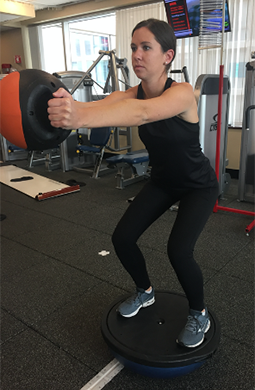
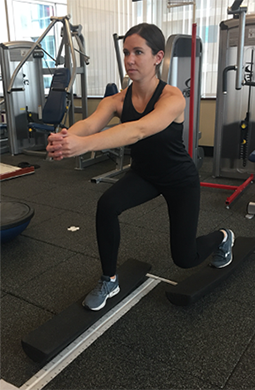
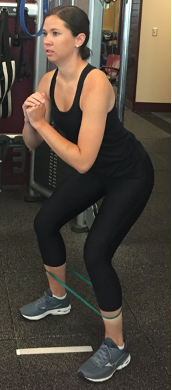
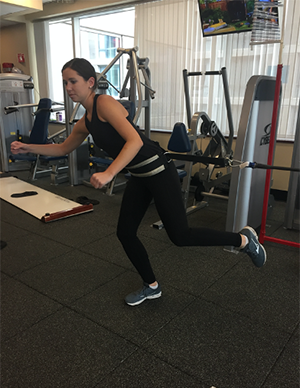
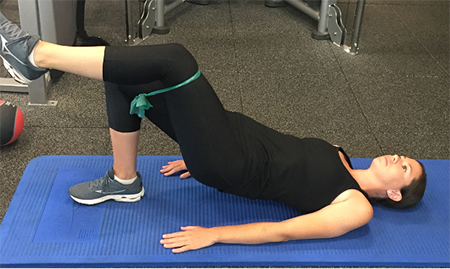
Evidence
- Kokmeyer D, Wahoff M, Mymern M. Suggestions from the field for return-to-sport rehabilitation following anterior cruciate ligament reconstruction: alpine skiing. J Orthop Sports Phys Ther. 2012;42(4):313-25.
- Raschner C, Platzer HP, Patterson C, Werner I, Huber R, Hildebrandt C. The relationship between ACL injuries and physical fitness in young competitive ski racers: a 10-year longitudinal study. Br J Sports Med. 2012;46(15):1065-71.
- Lefevre N, Bohu Y, Klouche S, Lecocq J, Herman S. Anterior cruciate ligament tear during the menstrual cycle in female recreational skiers. Orthop Traumatol Surg Res. 2013;99(5):571-5.
- Pujol N, Blanchi MP, Chambat P. The incidence of anterior cruciate ligament injuries among competitive Alpine skiers: a 25-year investigation. Am J Sports Med. 2007;35(7):1070-4.
- Pressman A, Johnson DH. A review of ski injuries resulting in combined injury to the anterior cruciate ligament and medial collateral ligaments. Arthroscopy. 2003;19(2):194-202.
- Oates KM, Van Eenenaam DP, Briggs K, Homa K, Sterett WI. Comparative injury rates of uninjured, anterior cruciate ligament-deficient, and reconstructed knees in a skiing population. Am J Sports Med. 1999; 27(5): 606-10.
- Langram M. Specific risk groups. Stay Safe on Snow. Available at: http://www.ski-injury.com/specific-risk-groups.
- Raschner C, Platzer HP, Patterson C, Werner I, Huber R, Hildebrandt C. The relationship between ACL injuries and physical fitness in young competitive ski racers: a 10-year longitudinal study. Br J Sports Med. 2012;46(15):1065-71.
- Heinrich D, Van den bogert AJ, Nachbauer W. Relationship between jump landing kinematics and peak ACL force during a jump in downhill skiing: a simulation study. Scand J Med Sci Sports. 2014;24(3):e180-7.
- St-onge N, Chevalier Y, Hagemeister N, Van de putte M, De guise J. Effect of ski binding parameters on knee biomechanics: a three-dimensional computational study. Med Sci Sports Exerc. 2004;36(7):1218-25.
Women's Sports Medicine Program
We provide our patients with comprehensive, coordinated care from experts who understand the unique needs of women in sports.
Tears of the ACL are 4-8x more likely to occur in females than males.
Differences in movement patterns and muscle weaknesses can cause females to be at greater risk for injury.
Sports Medicine at Mass General Brigham
Mass General Brigham's network of Harvard Medical School-affiliated experts leads the nation in sports medicine research, technology, and innovations.
Contact the Women's Sports Medicine Program.
We aim to lead the advancement of women’s sports and exercise medicine through multidisciplinary expert clinical care, research and education.
